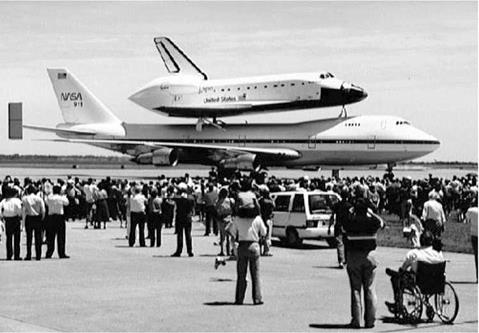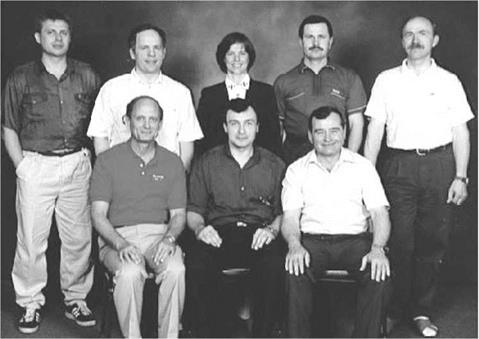A new space complex
While America was reeling from the loss of Challenger and her crew, the Soviets were about to launch their next space station. Twenty-two days after the Challenger accident, it was not Salyut 8 that was placed in orbit but a new station called Mir (“Peace”). This new station, it was explained, was just the core module of a planned larger complex, incorporating six docking ports (five around a forward-located “node” and the sixth at the rear) to accommodate visiting Soyuz and Progress spacecraft and additional modules being launched over the next few years. There would also be provision to receive the yet-to-appear Buran space shuttle. With more than one docking facility, planned crew rotation and resupply could be completed without the need to vacate the station, thus maximizing the efficiency of the crew and eliminating the need to power down or reactivate station systems between expeditions.
In 1987, Kvant 1 became the first module attached to the Mir core. This was packed with astrophysics instruments and was originally intended for Salyut 7. It housed the initial set of gyrodynes, which enabled the complex to maintain its attitude without firing its thrusters and using up precious onboard propellants. The next module, Kvant 2, arrived in 1989. Kvant 2 became an extension facility
|
Challenger’s replacement, Endeavour OV-105 stops off at Ellington Air Force Base near Houston on its way to Florida to begin its career in space. |
to the main core module and was used for scientific research and EVA operations using an integrated airlock section for the space walks. In 1990, the Kristall space processing facility (also known as the technological module) arrived at Mir, bringing experiment furnaces and other equipment to expand the scientific research program on the station. There was an additional docking facility on Kristall originally intended for Buran. Although this was never used by the Soviet shuttle, the American shuttle docked to this module via a Russian-built docking module added in 1995. Delays in delivering these modules stretched the Mir manifest and caused the station to be temporarily abandoned for a few months during 1989.
In 1988, the much anticipated Soviet Buran space shuttle completed its maiden, unmanned flight. Despite this impressive achievement Buran never flew again due to budget restrictions. After years of development, construction of facilities, and training of crew members, the program disappeared in the wake of changes to the former Soviet Union. The Buran cosmonaut team finally disbanded in the mid-1990s, with the residual hardware abandoned, and the program providing a new chapter in space history of lost opportunities and wasted resources.
Following the loss of Challenger, the Americans reevaluated the Shuttle program and, as a result, the majority of commercial satellite deployments were shifted to expendable launch vehicles. The emphasis of the Shuttle manifest for the rest of the decade was on the recertification of both the Shuttle system and
|
The first U. S./Russian Space Station crew (rear left to right): Onufriyenko, Solovyov, Dunbar, Budarin, Poleshchuk; (front row): Thagard, Dezhurov. and Strekalov. |
each individual orbiter, following the recommendations of the Challenger inquiry and to catch up with several important and long-delayed payloads which had to be launched on the Shuttle. Discovery was the first to return to flight, in September 1988, followed by Atlantis in December that year and finally Columbia in August 1989. The primary payloads launched in this period (1988-1990) were two Tracking and Data Relay Satellites, which would provide increased orbital communication coverage for future Shuttle missions. Other missions flown included the delayed deployment of the planetary probes Magellan (STS-30) to Venus, Galileo (STS-34) to Jupiter, and the solar polar observer Ulysses (STS-41). There were five fully classified DoD missions and the retrieval (STS-32) of the Long Duration Exposure Facility (LDEF), which had been deployed in 1984 and was originally planned for retrieval in 1985. The Hubble Space Telescope was also finally deployed (STS-30) and the first dedicated Shuttle pallet science mission, Astro-1 (STS-35), was flown to great success.












